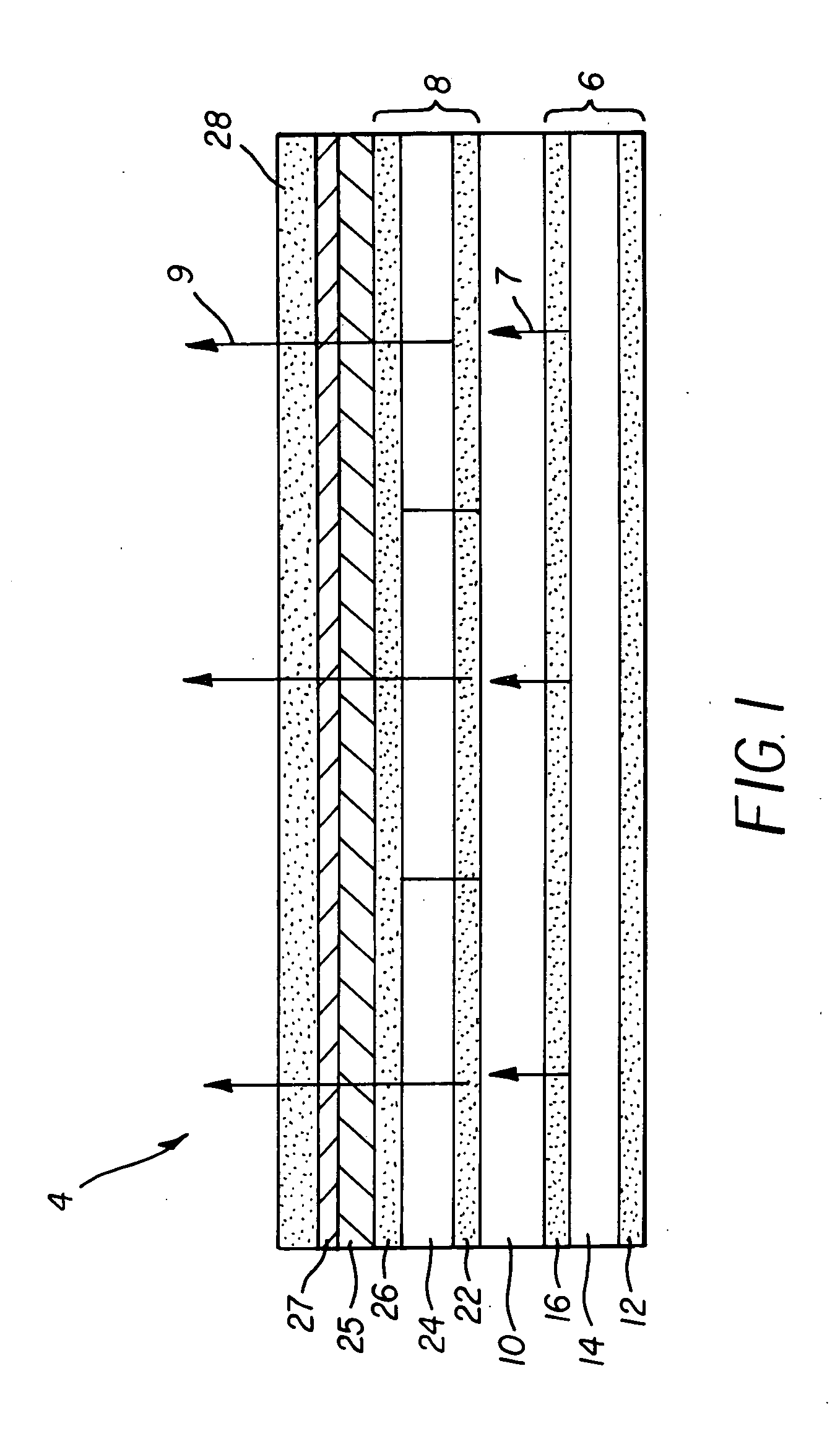Organic laser and liquid crystal display
a laser and liquid crystal display technology, applied in semiconductor lasers, non-linear optics, instruments, etc., can solve the problems of reducing power efficiency, reducing display contrast, and reducing power efficiency, so as to improve the overall efficiency of the liquid crystal display and simplify the integrated structure.
- Summary
- Abstract
- Description
- Claims
- Application Information
AI Technical Summary
Benefits of technology
Problems solved by technology
Method used
Image
Examples
Embodiment Construction
[0020] Referring to FIG. 1, a display 4, according to the present invention, includes a substrate 10 having a first and second side. On a first side, an asymmetric light emitting structure 6 capable of producing polarized light 7 is formed. The asymmetric light emitting structure 6 is used to produce the polarized light 7 that travels through the substrate 10. On the second side of the substrate 10, a transmissive liquid crystal (LC) element 8 is formed having a first liquid crystal electrode 22, a liquid crystal layer 24, and a second liquid crystal electrode 26. The liquid crystal electrodes 22 and 26 provide independently, electrically controlled elements for a pixilated LCD, as is known in the art. The liquid crystal electrodes 22 and 26 can apply an electrical field across the liquid crystal layer 24, so that in one state the liquid crystal layer 24 is transmissive and in another state the liquid crystal layer 24 is not transmissive. Depending on the state of the liquid crystal...
PUM
 Login to View More
Login to View More Abstract
Description
Claims
Application Information
 Login to View More
Login to View More - R&D
- Intellectual Property
- Life Sciences
- Materials
- Tech Scout
- Unparalleled Data Quality
- Higher Quality Content
- 60% Fewer Hallucinations
Browse by: Latest US Patents, China's latest patents, Technical Efficacy Thesaurus, Application Domain, Technology Topic, Popular Technical Reports.
© 2025 PatSnap. All rights reserved.Legal|Privacy policy|Modern Slavery Act Transparency Statement|Sitemap|About US| Contact US: help@patsnap.com



